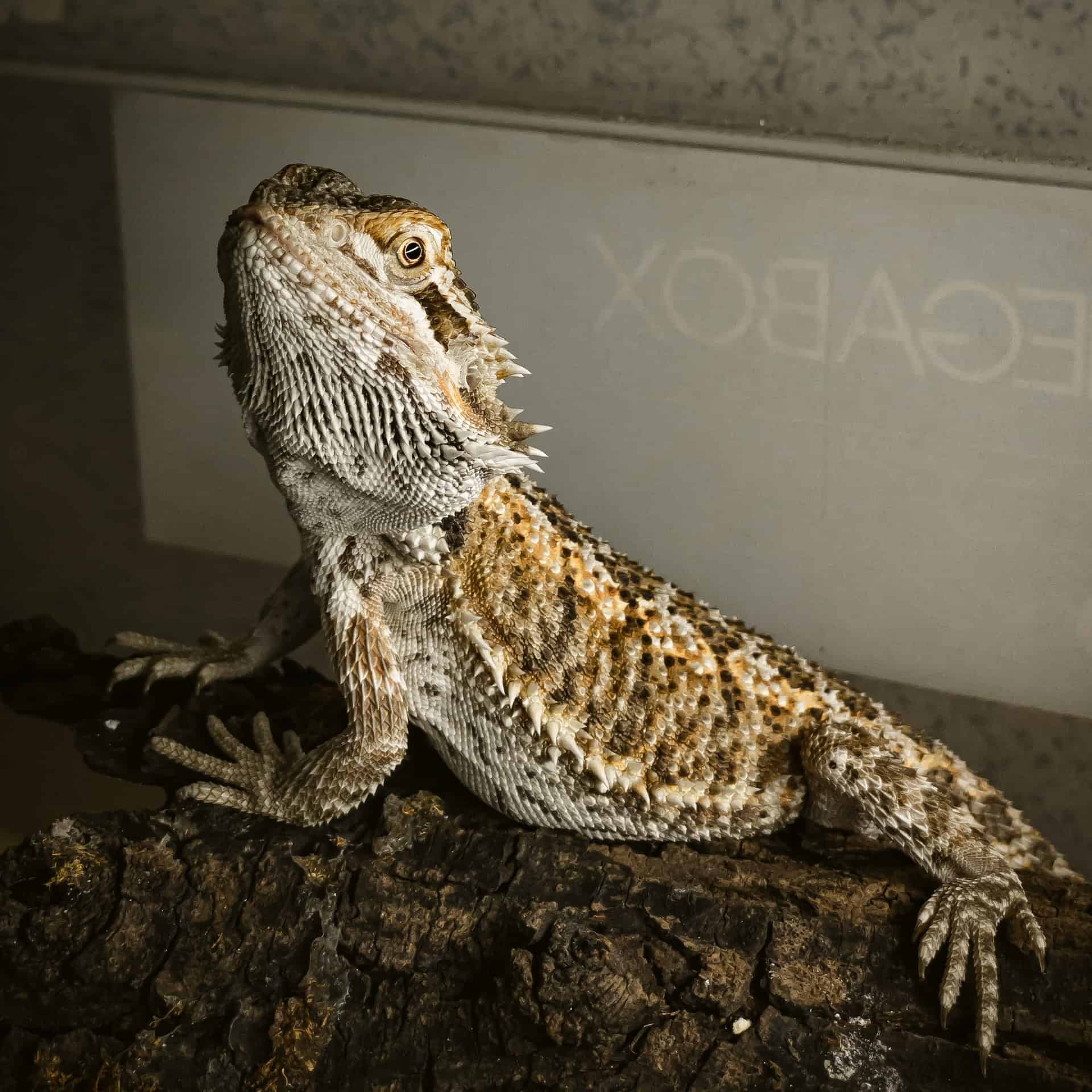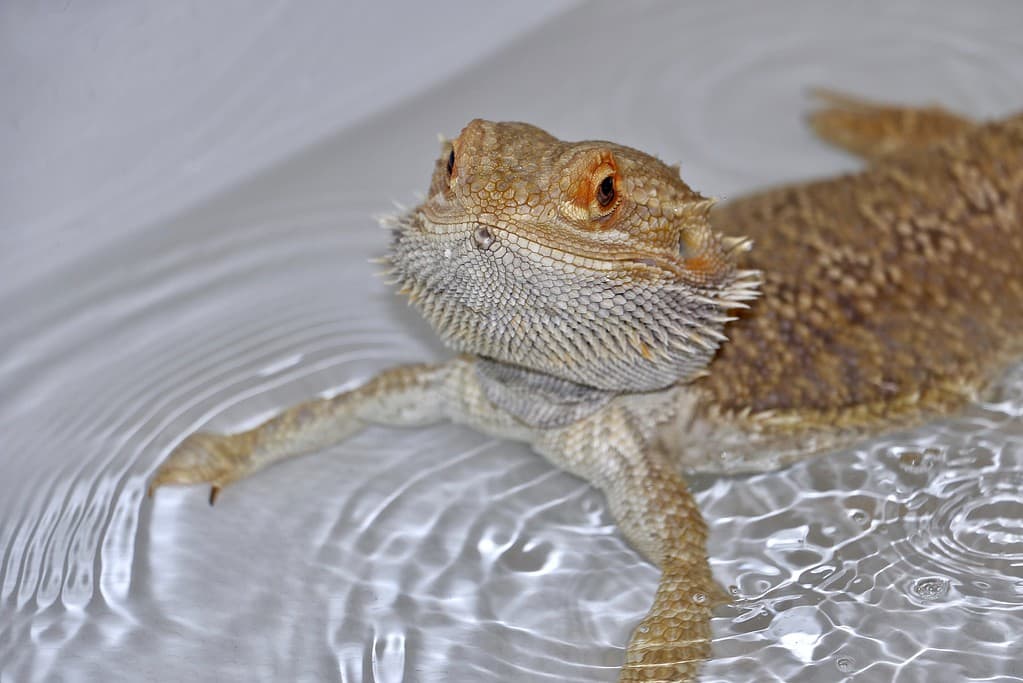Getting your very first bearded dragon may be a wonderful experience, especially for those who have never had one. These creatures are amazing to look at and can be great pets. But how long do you think your bearded dragon will live?

Beardies that live in captivity have a better life than bearded dragons that live in the wild. On average, these lizards can live for up to 15 years as pets. The average lifetime is believed to be between 8 and 15 years. You must work hard to ensure the reptile’s health and happiness to make them live long and peaceful life.
How Long Can Beardies Live?
Bearded dragons may live for anywhere between eight and fifteen years on average when kept as pets. This range is based on various factors, including the quality of care provided for them and several inherited characteristics.
Factors That Affect Beardies Lifespan
The average age of a bearded dragon can vary widely depending on various circumstances. These include the environment in which they exist, the quality of care they receive, the type of food they eat, their gender, the genes they inherit, and the quality of medical treatment they receive.
It’s essential to remember that you can never be sure how long a bearded dragon will live. Even if you take all necessary precautions, your pet may become unwell despite your best efforts.
On the other hand, if you take care of your beardie properly, there is a statistically substantial probability that it will live for a very long period.
Diet
A good diet will significantly impact the longevity of your bearded dragons. They are susceptible to illness, just like people and other animals. The food quality you provide them is directly related to their ability to avoid or overcome illness.
Beardies are omnivores, which means that they consume both plant- and animal-based items in their diets. If you wish your beardie to live as long as possible, providing it with well-balanced and healthy food is essential.
How you feed your bearded dragon will depend on how old it is. A high-protein diet is essential for young lizards; thus, a diet of 80% insects and 20% fruits and greens is recommended.
Once they have reached 18 months, bearded dragons are regarded to have matured into their adult forms. Your bearded dragon is no longer developing and, as a result, will require less protein in its diet. It is recommended that adult lizards consume a diet that is composed of 80 percent vegetables and 20 percent insects.
Beardie’s Health
As a beardie owner, you are responsible for ensuring that your pet has a high quality of life and leads a healthy way of life. You need to be aware of the many diseases that can affect your bearded dragon to protect it from those that can be prevented with the proper care.
Buying a bearded dragon from a reputable breeder or seller is more likely to have healthy genes. This is because the lizards come from breeders who operate ethically, directly or indirectly.
Sex
The average lifespan of a male bearded dragon is significantly greater than a female’s. Even though this isn’t always true, it’s important to know if life expectancy is a big factor. Male beardies are often bigger than their female counterparts.
Another factor that contributes to these disparities in life expectancy is reproduction. When you breed a female bearded dragon, it requires a significant amount of effort on their part. Even after they have finished producing eggs, it negatively impacts their bodies and does not go away.
Habitat
Bearded dragons are strange animals that live in dry areas, and you need to make an environment like that. In light of this, the perfect habitat for lizards must consist of either a tank with a capacity of forty gallons or, even better, a significantly larger one.
You should also avoid bad things for the beardie, like loose substrate that it could accidentally eat. In order to avoid this kind of incident, you should purchase a strong substrate such as a reptile carpet or ceramic tiles.
One further thing that can shorten the lifespan of your adult bearded dragon is if you choose to have many pets in the same cage. While they may live happily together, they will struggle for resources and food, shortening one’s life.
Regular Vet Checkups
It is essential that all pets, especially bearded dragons, have routine veterinarian examinations. Even though bearded dragons do not require vaccinations, you should still take your beardie to a veterinarian specialising in reptiles at least once a year for a checkup.
In addition, your veterinarian should inspect your pet’s faeces once a year for any signs of parasites. This will not only guarantee that your bearded dragon is healthy, but it will also help them live for a longer period of time.
How Long Do Bearded Dragons Live in the Wild?
In the wild, a bearded dragon can live alone and, on average, lives between five and eight years.
One of the main reasons why wild animals live shorter lives is because of natural predators. Bearded dragons have a number of potential enemies, including bigger lizards and birds of prey. Bearded dragons can avoid being eaten by snakes, birds, and other predators because their colours blend in with their natural environment. Beardies have the same shades of grey, yellow, and brown skin as the sand and pebbles found in their habitat.
In order to survive, bearded dragons need to be kept in warm environments. They don’t have a warm blood supply; therefore, they must constantly rely on other things to maintain their body temperature. This level adjusts according to the temperature of their environment. They keep themselves warm by bathing themselves in the sun and may burrow underground to escape dangerous temperatures and predators.

How to Maximize the Bearded Dragon’s Lifespan?
Because of all the things that might shorten or prolong a bearded dragon’s life, it is essential to understand how to keep it healthy and happy.
Here are some suggestions for maximizing your pet’s longevity.
Provide the Suitable Heating
Heat is essential to a bearded dragon’s life since, in the absence of heat, the animal is more likely to experience various health difficulties, such as digestive troubles. Also, they won’t have the right environment to absorb nutrients, leaving them without calcium.
Always use a digital thermometer to get the most accurate readings possible of these temperatures. In addition, if you go to a local pet store, you should be able to get a thermometer that is specifically designed for use with reptiles.
Check the Pet’s Diet
Although there is a fairly long list of items you can give your bearded dragon, this does not indicate that everything is suitable for consumption by the animal. For instance, if you are not careful, feeding your dragon an inappropriate diet of home-caught insects is simple.
On the other hand, it is strongly suggested that you choose meals that your dragon can consume without any problems.
Keep an Eye on the Bearded Dragon
As you continue pet ownership, recognize that the beardie depends on you. You must closely check the animal to guarantee it receives all the essentials for its continued existence and a longer lifetime.
Always be sure to check for any potential health and physical problems. In an ideal situation, it is essential to perform a check for bone production, and one of the parts you will undoubtedly observe is the jaw bone.
Get a Suitable Enclosure Setup
Since a bearded dragon’s natural environment is open and allows it to move around freely, try to make an environment as close to this as possible. Keep in mind that bearded dragons may reach a length of up to 45 centimetres; therefore, it is crucial to provide them with a spacious terrarium.
In addition, since it will be confined inside such a small space, your beardie will likely become agitated. If you begin with baby beardies, it can happen because a smaller tank might seem the best place for them.
